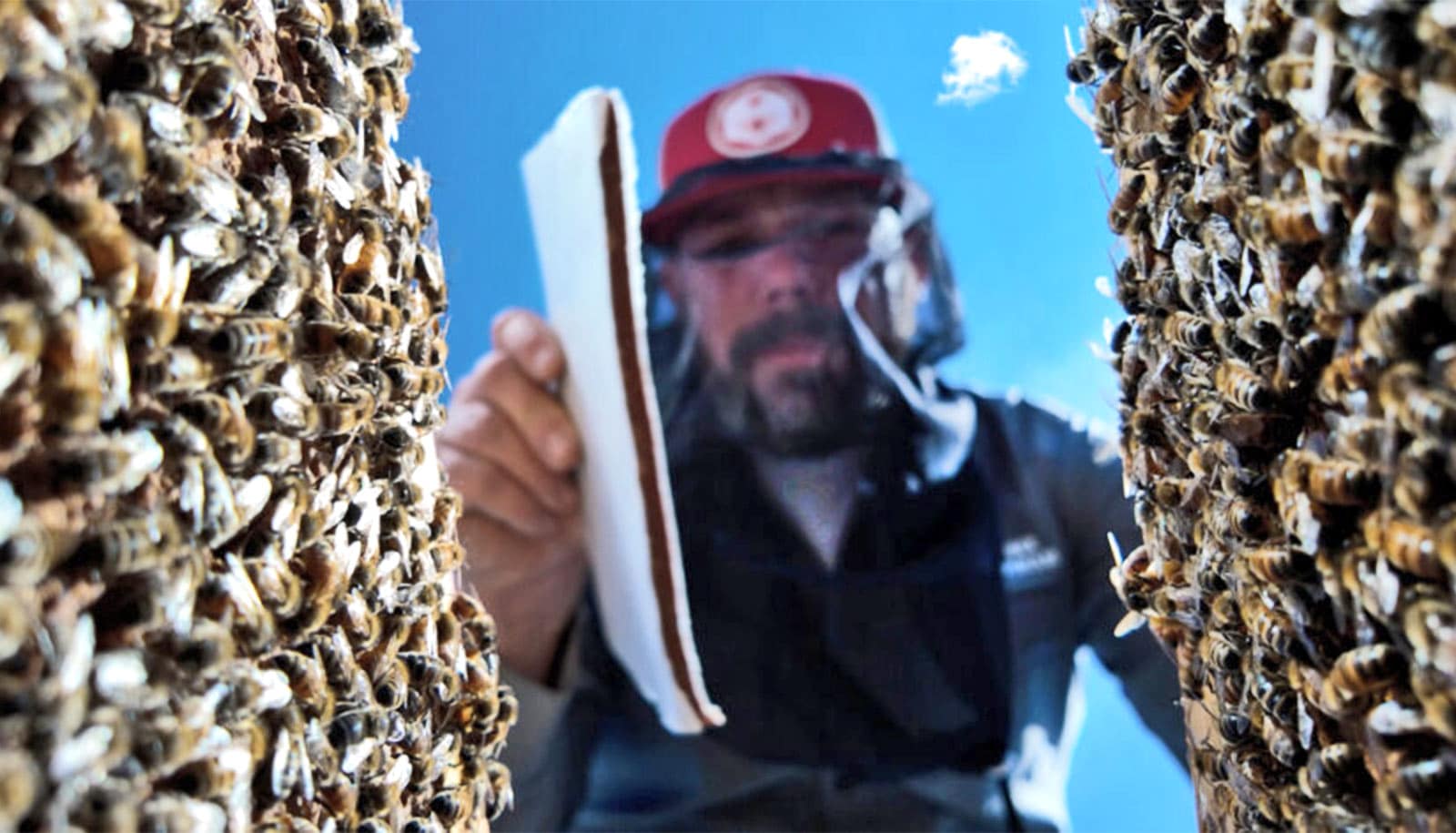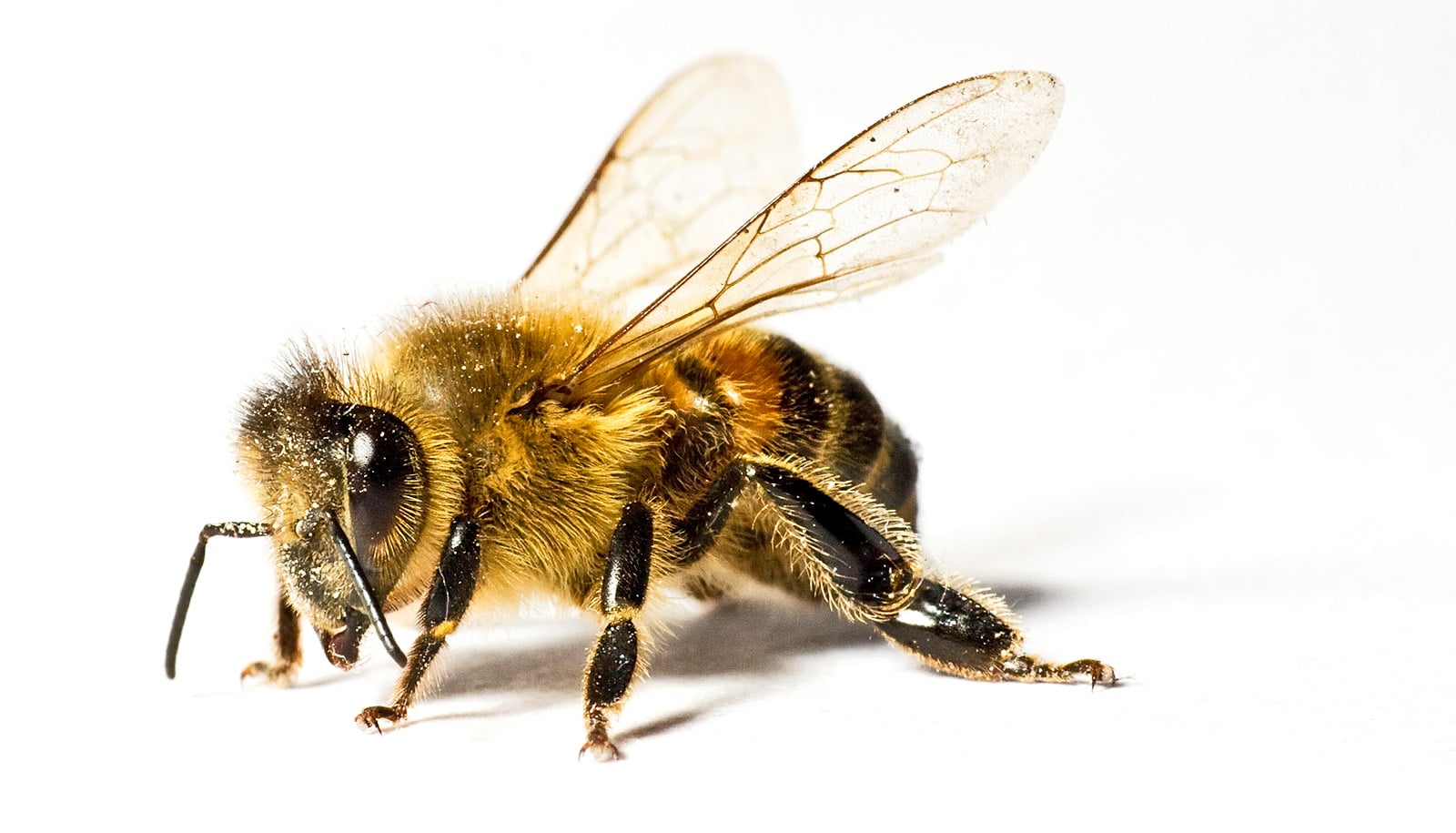It takes bees dozens, if not hundreds, or trips to learn how to get nectar from varying types of flowers. Gathering pollen, however, involves two tricks: scrabbling and buzzing.
A new paper published in Behavioral Ecology shows what is involved in the seemingly simple process of a bumble bee visiting a flower to gather pollen and the subtle cues a bee looks for.
“For a long time, we have known that bees can learn all kinds of cues—tactile, visual, and olfactory—when going after nectar rewards,” says first author Avery Russell, who did the research as a doctoral student in the graduate interdisciplinary program in entomology and insect science at the University of Arizona.
“When you open a can, you have to use a can opener, then use your fingers to pry the lid open. A bee might have to pop open the flower’s petals, and might have to try many times over multiple trips until they get good at it. But not much was known in the context of pollen rewards.”
Specifically, researchers wanted to know if bees need to learn in order to collect pollen efficiently from flowers that vary in their form. The findings suggests they don’t, and they don’t need to.
“Our findings suggest that unlike nectar foraging, which requires complex learning behavior, bumblebees already know how to collect pollen,” Russell says, “and they do it by switching between two responses that are seemingly hardwired into their brains.”
Once a bumble bee touches down on a flower, it wastes no time. If it senses that the anthers are laden with abundant pollen just waiting to be shaken off like ripened apples from a tree, the bee does the obvious: starts “scrabbling.” Using its mandibles and legs, the bee brushes the pollen grains onto its body, then combs them off into collection baskets located on each of its hind legs.
“If you picture a happy toddler in a play pit filled with plastic balls, you get the idea of scrabbling,” Russell says.
However, some flowers make their pollen grains more difficult to access, or sport intricate anther designs that dispense only a little bit of pollen at a time.
“That way, the plant makes sure pollinators don’t eat it all, but carry it to other flowers for pollination instead, and also leave some for other visitors as well, so the flowers aren’t limited to a single pollinator,” he says.
When visiting some of these trickier flowers, bumblebees switch to a different behavior called sonication—or, in more familiar terms, buzzing. Not unlike a sonicating toothbrush that vibrates to shake plaque from teeth, a sonicating bee vibrates vigorously to free pollen grains hidden inside the flower.
Bees switched between these two motor regimes depending on chemical and mechanical cues: They scrabbled when pollen was abundant, and sonicated when pollen was scarce, either because the flower already had been depleted or because its pollen is less accessible by design.
To keep bees from disappearing, listen to their buzz
To tease apart the cues that trigger each behavior, researchers made artificial flowers and treated some of them with chemical extracts from natural anthers. Bees visiting a surrogate flower without extract didn’t stick around and took off again in search of more rewarding offerings.
When they encountered a foam flower without pollen but with the chemical cue, they buzzed them in a futile attempt to harvest the nonexistent pollen. And when they sensed pollen grains, even artificial ones, scrabbling ensued.
“Bumblebees tend to sonicate on pollen-concealing anthers right away, but they also buzz accessible anthers when they can’t detect pollen by touch,” Russell says. “We think they do that in an effort to collect the dregs from a flower after most of its pollen has been harvested.”
Being able to switch between two programmed routines allows bees to effectively collect pollen from flowers no matter what the situation.
Watch: Honey bees clean pollen off their hairy eyes
This flexibility also may explain a fact that had evolutionary biologists stumped for a long time: Flowers with concealed pollen stores evolved many times independently, suggesting that pollinators must always have had a way to harvest pollen from them, or else the co-evolution between the two would have led to a dead end and not survived.
“Researchers used to think that floral sonication is a behavior only used to collect pollen from concealed pollen stores,” Russell says, “but because we often observe bees buzzing on flowers with accessible pollen, we conclude that it’s a behavior that has evolved as a general strategy to collect pollen from any type of flower.”
Source: University of Arizona



